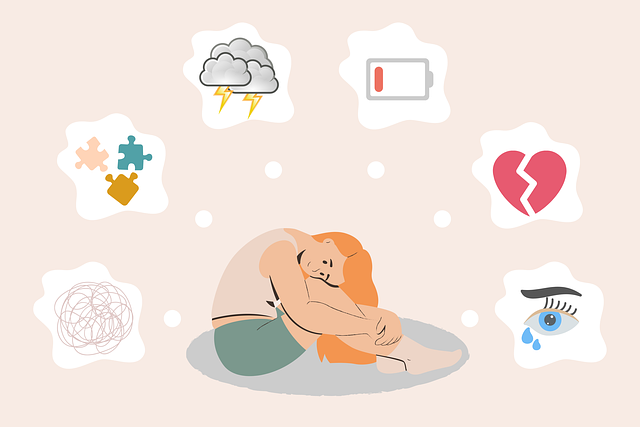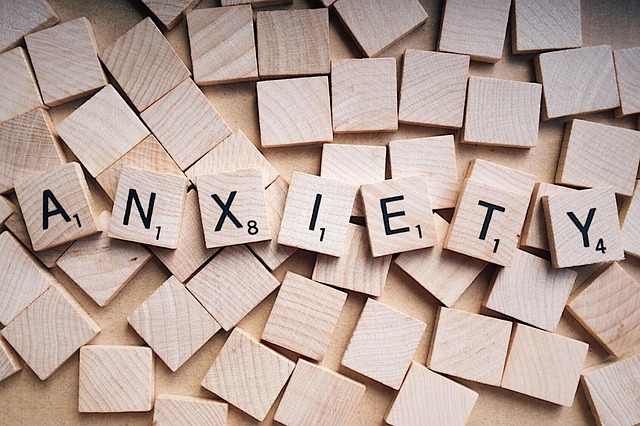Public awareness campaigns play a vital role in promoting mental health by educating, dispelling myths, and fostering empathy, acting as crisis intervention tools. They reduce stigma, encourage open conversations, and incorporate stress reduction methods, all key aspects of Therapy for Mindfulness. This ancient practice enhances present-moment awareness and emotional regulation, reducing stress and improving well-being. Integrating mindfulness into campaigns can revolutionize mental health support, making it accessible and practical. Effective content includes clear objectives, actionable techniques, visual aids, storytelling, and interactive elements like guided meditations. Engagement is crucial through live sessions, workshops, and user-generated content to transform passive viewers into active participants. Campaign impact should be measured beyond participation numbers, focusing on behavioral changes, stress levels, positive emotions, coping mechanisms, and burnout prevention, with insights refining future strategies for Therapy for Mindfulness.
Public awareness campaigns play a pivotal role in shaping societal attitudes and behaviors, with mindfulness emerging as a powerful tool for positive change. This article explores the development of effective campaigns centered on therapy and mindfulness, delving into their role, strategies, and impact. We examine key messages that resonate with modern audiences, techniques to foster engagement, and methods for measuring success. By understanding these elements, we can enhance the effectiveness of mindfulness initiatives, promoting a healthier, more mindful society.
- Understanding Public Awareness Campaigns: Their Role and Impact
- The Power of Mindfulness: A Key Message for Modern Campaigns
- Strategies for Creating Effective Therapy-Centric Content
- Engaging Audiences: Techniques to Foster Interaction and Participation
- Measuring Success: Evaluating the Effectiveness of Mindfulness Campaigns
Understanding Public Awareness Campaigns: Their Role and Impact

Public awareness campaigns play a pivotal role in shaping societal perceptions and behaviors regarding various issues, including mental health. These initiatives are designed to educate and enlighten the public, dispel myths, and promote understanding—a crucial aspect of therapy for mindfulness. By reaching out to people on a large scale, these campaigns can foster empathy, encourage support, and reduce the stigma associated with mental illness.
In the context of crisis intervention guidance, awareness campaigns serve as powerful tools to equip individuals with knowledge about recognizing signs of distress and providing immediate assistance. Moreover, they contribute to Mental Illness Stigma Reduction Efforts by promoting inclusive attitudes and encouraging open conversations about mental health. Additionally, such initiatives often incorporate Stress Reduction Methods, helping people develop coping strategies for better well-being.
The Power of Mindfulness: A Key Message for Modern Campaigns

In today’s fast-paced world, where stress and anxiety are prevalent, mindfulness has emerged as a powerful tool for public awareness campaigns. Therapy for mindfulness offers a much-needed respite from the constant barrage of information and stimuli, helping individuals cultivate present-moment awareness and emotional regulation. By incorporating mindfulness practices into these campaigns, we can effectively reach out to folks struggling with mental health issues, offering them a simple yet profound way to navigate life’s challenges.
Public awareness campaigns development should focus on teaching mindfulness as a skill that promotes resilience building. This ancient practice has been scientifically proven to reduce stress, improve focus, and enhance overall well-being. By framing mindfulness as an accessible and practical solution for trauma support services, we can encourage people to embrace a more balanced and peaceful life. Such initiatives have the potential to revolutionize how we approach mental health, making it an integral part of our daily routines rather than a luxury.
Strategies for Creating Effective Therapy-Centric Content

Creating effective therapy-centric content requires a strategic approach that combines educational and engaging elements. Start by defining clear objectives that align with the therapeutic goals, whether it’s promoting mindfulness or emotional regulation. Incorporate simple, actionable techniques and real-life examples to make the content relatable for your audience. Visual aids, such as infographics or short videos, can significantly enhance understanding and retention, especially when coupled with concise scripts.
Leverage storytelling to humanize the therapy experience and foster a sense of connection. Share personal anecdotes (while maintaining confidentiality) that illustrate common challenges and successful outcomes. Integrate burnout prevention strategies for healthcare providers, emphasizing the importance of self-care alongside patient care. Ensure the content encourages interactive participation, like guided meditations or journaling prompts, to support emotional well-being.
Engaging Audiences: Techniques to Foster Interaction and Participation

In the realm of public awareness campaigns, fostering engagement is key to achieving lasting impact. One effective strategy is integrating interactive elements that encourage audience participation. This could involve hosting live sessions, such as Q&A forums or workshops on Stress Management Workshops Organization, where individuals can actively learn and apply techniques for mental well-being, including mindfulness practices. By creating a safe and supportive environment, campaigns can attract diverse groups, ensuring Cultural Sensitivity in Mental Healthcare Practice.
Additionally, leveraging digital platforms with user-generated content allows for continuous interaction. For instance, sharing therapeutic exercises or trauma support services through online communities enables individuals to contribute their experiences while learning from peers. This not only amplifies the reach of the campaign but also transforms passive viewers into active participants, enhancing the overall impact and effectiveness of public awareness initiatives focused on mental health, like Therapy for Mindfulness.
Measuring Success: Evaluating the Effectiveness of Mindfulness Campaigns

Evaluating the success of public mindfulness campaigns is a multifaceted process that goes beyond simple participation numbers. True effectiveness lies in measuring behavioral changes and improved mental wellness among individuals exposed to these initiatives. One effective method is tracking shifts in self-reported stress levels, as well as an increase in positive emotional states and enhanced coping mechanisms.
Furthermore, examining the impact on burnout prevention is a crucial component of campaign evaluation. By assessing reductions in work-related exhaustion, depersonalization, and cynicism, researchers can gauge whether mindfulness practices have fostered more resilient and satisfied employees. These insights are invaluable for refining communication strategies and tailoring future campaigns to better serve communities seeking therapy for mindfulness and improved mental health.
Public awareness campaigns play a pivotal role in promoting mindfulness, significantly impacting individual well-being and societal mental health. By understanding the power of consciousness and employing effective strategies, such as creating engaging content and fostering audience interaction, we can enhance the reach and impact of these initiatives. Evaluating success through measured outcomes ensures that therapy-centric public awareness campaigns not only resonate but also drive positive change. This holistic approach to mindfulness education is crucial in navigating today’s fast-paced world, ultimately empowering individuals to take charge of their mental health.














